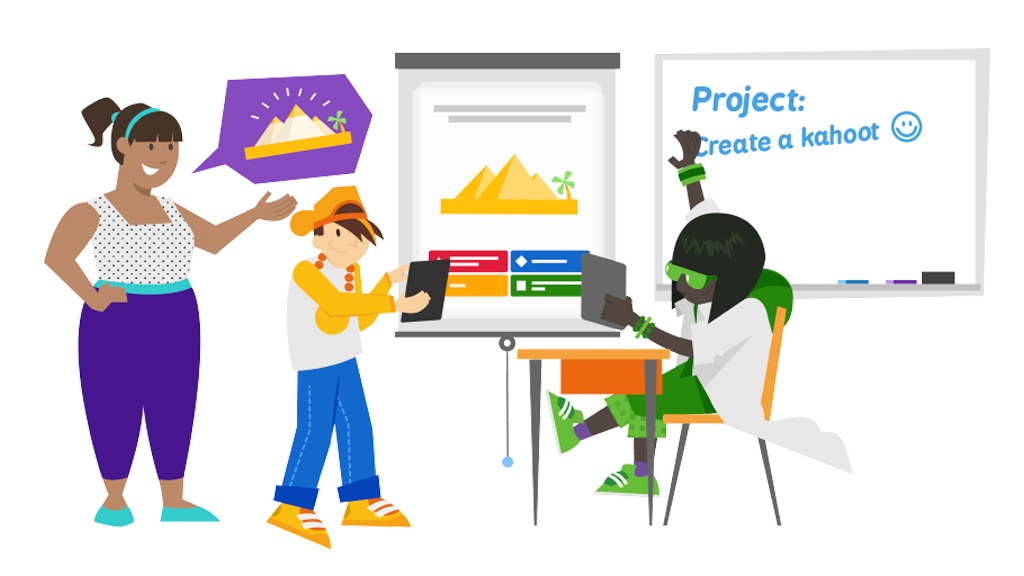Focusing on what’s most important for students to learn, maximizing how much and how deeply they learn and helping them put knowledge into practice – I think most teachers agree on these key goals. The journey you take towards these goals, however, varies a lot, as well as the tools, processes and teaching practices.
With Kahoot!, you can go on a learning journey through questions and answers in a fun, interactive environment. Children start exploring through asking questions from an early age, so it’s a natural way for us all to learn.
When you create a Kahoot! quiz, coming up with the right questions around a topic and having a good combination of correct and incorrect answers is an exciting challenge. You need a dash of creativity to find the optimal mix that will make the game fun and engaging for your learners.
So what is the process of making a good, impactful educational Kahoot! quiz to take students on a quest for knowledge?

Step 1: Define key knowledge
Start by outlining the expected outcome. Find or determine the key knowledge students should retain after playing the quiz. What practices and/or theories would you like them to take out of the class?
Step 2: Package chunks of knowledge into simple questions
Then, split that knowledge into sizeable chunks and format it into short, easy-to-understand questions. Depending on the goal and expected learning, the types of questions can vary a lot. E.g. it can be a question with a goal to remember or revise something from a lecture or a textbook, or it can be question where students have to do some analysis, computations, or evaluations to get to the correct answer. The goal of the question will determine the time students need to find the answer, as well as how the question and answers are phrased.
Step 3: Come up with relevant answers – incorrect ones, too!
True or false, one correct answer or many, maybe even all of them being correct – there are many choices here. This step requires both analytical skills, as well as creativity, and it’s probably the most critical for making your quiz a success.
If the incorrect answers look completely implausible, answering will be too easy and the question won’t make an impact. Try to find a good balance of relevant correct and credible incorrect answers.
By the way, when students create quizzes on their own, step three is probably where most of the learning takes place. Not only do they need to find the correct answer, but also apply their knowledge to coming up with incorrect answers that look “real”.
Step 4: Make the question more engaging with an image or video
This step is optional, but highly recommended for making your quiz more engaging and fun. Illustrations or other media can be used in various ways:
- Use an image to elaborate on the question. For example, it can show detailed text, figures, tables, formulas or charts.
- Find a picture that gives associations or hints to the question and/or the answers.
- Add a relevant YouTube video that enhances the question in some way. It can be a hint or, on the contrary, a way to trick the players and test their attention.
- My favorite way of using media in a kahoot is to create an illustration of your own – a photo, a drawing or maybe even an animation. If your students create their own games, I recommend to make this step a part of the assignment. Not only it’ll give their quizzes more of a personal touch, but will also give them an opportunity to train their creative skills.
Step 5: Reorder questions to make a nice progression through the game
Finally, place the questions in an order that would give a nice progression through the quiz. Try starting the quiz with some easy questions with more than one correct answer, to give players confidence and time to warm up. As the game progresses, the difficulty level of the quiz can increase. However, you can also try rounding up the quiz with a couple of easier questions to maintain the competitive mood.
Placing questions in order of difficulty is just one example. As an option, you can arrange them by subtopic or place hints in questions for the next ones. It’s all up to you and your creativity!
Playing the quiz with the same students for reinforcement? Then you can tweak the order of questions to make the game less predictable, and also use the option to “Randomize order of answers in each question” before you launch your kahoot.
P.S. Learners to Leaders in action
In addition to playing Kahoot! in class, I recommend you to let students take the lead and create their own games. When they do their own research of a topic, they acquire new knowledge, learn how to pick out what’s most important and how to phrase that in a question. Working on questions and answers, they train both their analytical and creative skills!
Enjoy creating your new quests for knowledge and stay tuned for my next article where I’ll focus on different ways to ask questions.




